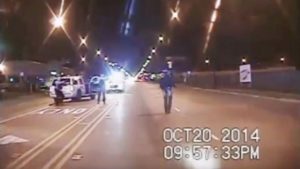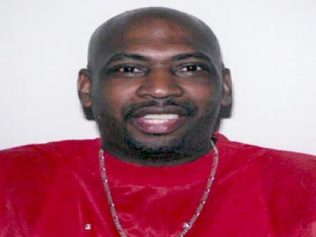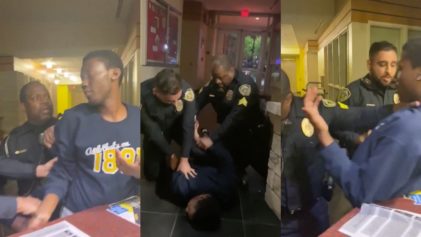
Jason Van Dyke, the disgraced officer who faces trial for first-degree murder in the October 2014 gangland shooting death of 17-year-old Laquan McDonald, purposefully tampered with his dashcam and microphone. Moreover, DNAInfo Chicago has learned that only two of the five police cars at the scene had a dashcam that could record video, and only one had a functioning microphone. But it gets better, or worse, depending on your point of view: A review of more than 1,800 police maintenance logs found that police sabotage of cameras is widespread.
Police officials found that 80 percent of the city’s 850 dashcams do not properly record audio, blaming it on officer error and “intentional destruction.” Further, on a given day, 12 percent of dashcams have “video issues” because of “equipment or operator error.” And the details bring the scope of the problem into focus.
Typically, Chicago cops would pull the batteries out of the cameras, place the microphones in their glove compartments, broke or got rid of the microphone antennas, if the dashcams had microphones at all.
Of the 22 police shootings reviewed by Cook County prosecutors last year via the Independent Police Review Authority, none of them had audio, and only three had video, according to DNAInfo. Based on the maintenance records of police vehicle 6412 — the squad car driven by Officer Van Dyke and his partner Joseph Walsh — there were months-long wait times for two dashcam repairs, including a long delay to repair “intentional damage.”
On June 17, 2014, a dashcam wiring issue on the vehicle was repaired three months after it was reported broken. The next day, the same dashcam was once again reported broken, and it took until October 8 to fix what technicians referred to as “intentional damage.” Meanwhile, on October 20, the night that Van Dyke shot and killed McDonald with 16 bullets, the dashcam video did not record audio. The video released to the public was taken from another squad car, but that dashcam was missing sound as well. On November 21, 2014, a review of 10 videos downloaded from that police car found it “apparent … that personnel have failed to sync the MICs [sic].”
This recent report helps to further erode public confidence in the Chicago police and Mayor Rahm Emanuel, as the ongoing scandal of corruption, criminality and coverup by the Chicago Police Department chases him like a police dog. But the problem is by no means limited to Chicago.

Dashcam footage of Laquan McDonald before shooting
A 2014 investigation by the Los Angeles Police Department found that officers in that city removed antennas from their cars in Black communities. This was done to disable the recording devices so the officers could avoid being monitored while on duty. The LAPD review revealed that in the Southeast division — which includes Watts and the Jordan Downs and Nickerson Gardens housing projects — half of the 8o squad cars were missing their antennas. Moreover, at least 10 additional cars in nearby divisions had antennas removed.
“On an issue like this, we need to be brought in right away,” Steve Soboroff, Police Commission President, told the Los Angeles Times. The commission, whose members were outraged by the news, is the body which oversees the police department.
“This equipment is for the protection of the public and of the officers. To have people who don’t like the rules to take it upon themselves to do something like this is very troubling,” Soboroff said.
Police department officials had concluded it was futile to determine which officers were responsible for the tampering, opting instead for a system of accounting for the equipment at the beginning and end of each shift.
Ironically, one of the reasons a federal judge decided to remove the U.S. Department of Justice oversight of the LAPD the year before was due to the implementation of measures such as the cameras.
The lesson here is this: Police dashcams are only as good as the officers who intentionally destroy them.


